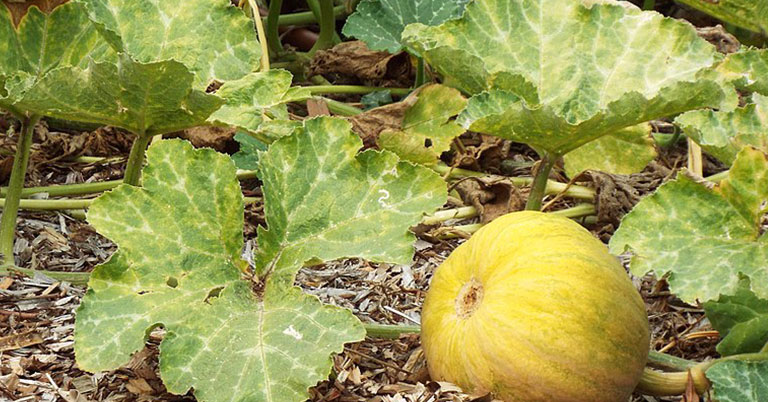A summer garden isn’t complete for me unless I’m growing some kind of squash. Whether it’s zucchini, butternut, or spaghetti squash, there’s always a squash plant growing. Squash, like all vegetables, has specific needs, and if those needs aren’t met, they can fall ill and die. Squash needs the right nutrients, sunlight, and water in order to grow. If there’s a problem, your squash leaves will likely be the first indicator.
One common problem with squash is yellowing leaves. It’s the middle of summer, your squash has begun growing, and now the leaves are turning yellow, browning, and dying. What’s going on? In this article, we’ll explore why your squash leaves are turning yellow and what you can do to get your plants back on the right track.
Why are my squash leaves turning yellow?
It’s a question we hear a lot: why are my squash leaves turning yellow and dying? The most likely reason for yellowing leaves is incorrect watering – you may be watering your squash too much or too little.
Squash needs an inch of water every week. The soil needs to be fully moist 8-12 inches down in order for the squash to be properly hydrated. If you live in a climate like mine where the summers are hot and dry, you may need to give your squash a watering every day.
Conversely, you can overwater your squash. The ground around your squash shouldn’t be soggy. Moist, but not drenched. If your squash is getting waterlogged, you’re overwatering or your soil may be too compacted or blocked from draining properly.
A nutrient problem
One of the most common reasons for yellowing squash leaves is a lack of essential nutrients, such as nitrogen, phosphorus, or potassium. These elements play a crucial role in the plant’s overall health, growth, and development.
Like all plants, squash needs certain nutrients in order to grow and produce edible squash for us to eat. Squash needs plentiful nitrogen, phosphorus, and potassium, also known as NPK. If your phosphorus in particular is low, you can try adding bone meal.
Regularly check the nutrient levels in your soil and apply the appropriate fertilizer to maintain a balanced and healthy environment for your squash plants. Using organic compost or slow-release granular fertilizers can also help improve soil quality and prevent nutrient deficiencies.
You can make your own natural, all-organic NPK fertilizer by mixing 10 pounds of bone meal, 10 pounds of feather meal, and 2 pounds of sulfate of potash.
Ensuring that your soil is well fertilized at the time of planting and throughout the summer is vital to healthy squash.
Poor Soil Conditions
Unsuitable soil conditions, such as compacted soil or inadequate drainage, can hinder the proper growth and development of squash plants. These conditions can lead to root stress, which may cause leaves to turn yellow.
Solution: Test your soil for pH, compaction, and drainage issues. Amend compacted soil by adding organic matter or using a tiller to break it up. If drainage is an issue, consider adding perlite, vermiculite, or sand to improve the soil structure.
Overwatering or Underwatering
Inadequate or excessive watering can also cause squash leaves to turn yellow. Overwatering may result in root rot, while underwatering can lead to dehydration and stress on the plant.
It’s important that you maintain a consistent watering schedule and be mindful of your plant’s specific needs. Squash plants generally require around 1-1.5 inches of water per week. To prevent overwatering, make sure your soil has proper drainage and avoid watering during periods of heavy rainfall.
Temperature Stress
Squash plants are sensitive to temperature fluctuations, and extreme heat or cold can cause leaves to turn yellow. High temperatures can cause water loss and nutrient deficiencies, while cold temperatures can damage plant cells.
Monitor the temperature in your garden and provide protection for your squash plants during extreme conditions. Use shade cloth to shield them from intense sunlight or cover them with frost blankets during cold spells. Mulching can also help regulate soil temperature and retain moisture.
Squash pest problems
Yellowing leaves can also be a sign of pest infestation or disease. Common pests that target squash plants include aphids, spider mites, and squash bugs. Diseases such as powdery mildew, bacterial wilt, and mosaic virus can also cause leaves to turn yellow.
Regularly inspect your plants for signs of pests and diseases. If you find any, take immediate action by applying organic insecticides or fungicides, introducing beneficial insects, or removing infected plant parts. To prevent future problems, maintain proper plant spacing and practice crop rotation.
Yellowing squash leaves can be an indication of various issues, but with careful observation and proper care, you can diagnose and fix the problem. By providing the right nutrients, proper watering, pest and disease control, suitable soil conditions, and temperature management, you can ensure the health and vitality of your squash plants, leading to a bountiful harvest.













